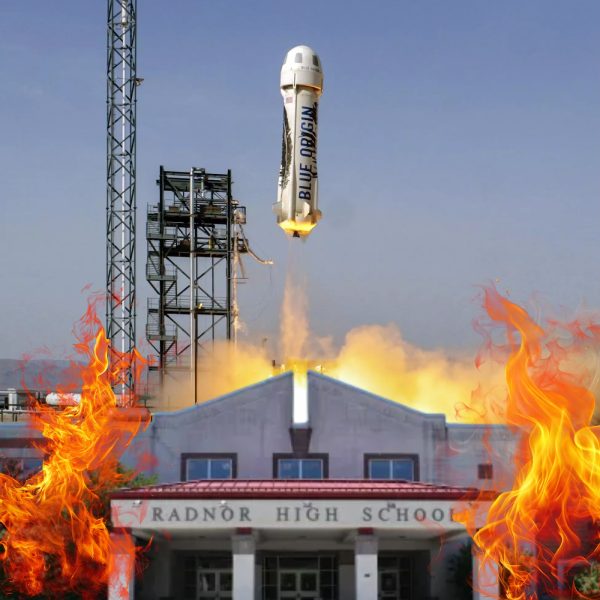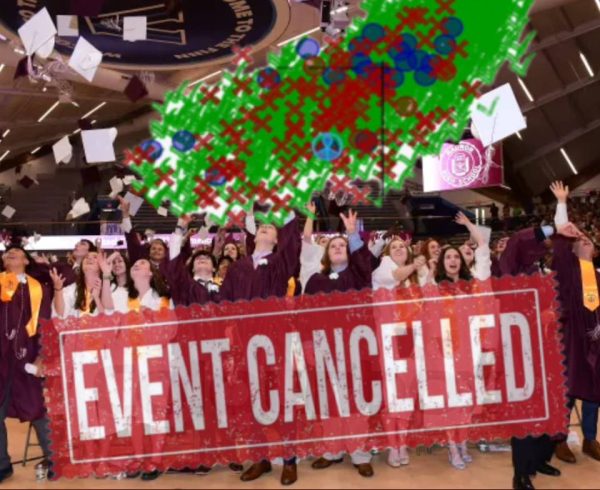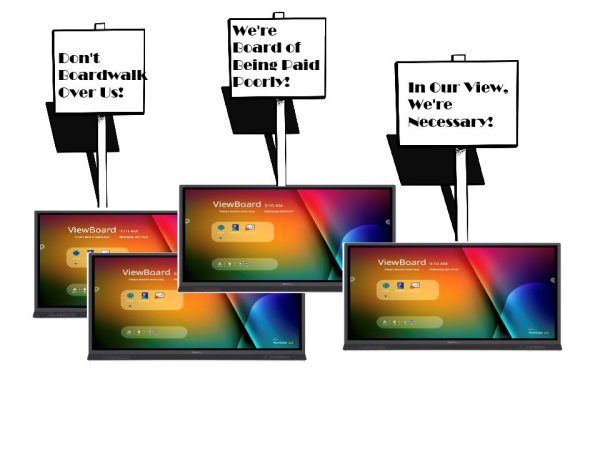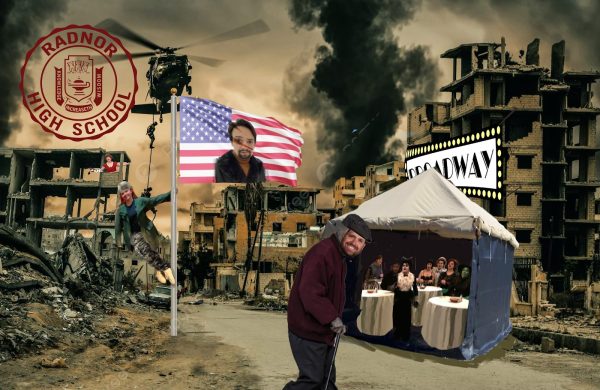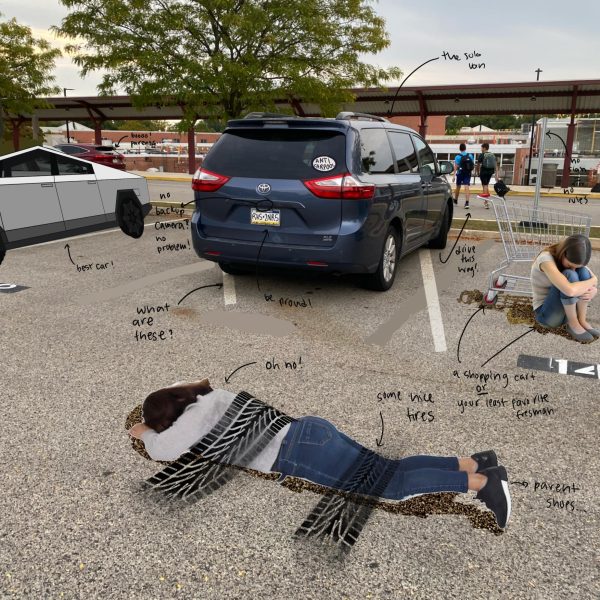A Not-So-Bright Ending to the Solar Eclipse
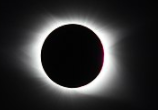
October 3, 2017
This is the moment when you know your world is about to end: not when you finally come to terms with the fact that you (well, not you, but someone somewhere) will be deprived of sunlight for a few minutes during the day in the upcoming week, but when you pass by the Radnor Memorial Library and see a bright-pink, neon sign that reads, “Sorry, we are out of eclipse glasses,” dangling behind the glass door.
August 21, 2017 – It was just another day on my calendar for most of the summer. I hadn’t been resolutely hunting down solar eclipse glasses or curiously scouring the Internet for details and information. I was blind to how quickly this supposedly eventful day was approaching until a couple of weeks beforehand when the topic started to surface on the daily news and in conversations. As my interest piqued, however, I stumbled upon the following discouraging facts:
· Solar eclipses happen somewhere around the globe every 18 months
· In the Radnor area, there will only be about 75% totality
I pushed away my keyboard and reverted to treating all the commentary about the spectacle like background noise. After all, how incredible would it actually be when I was so far away from the path of totality and when I still had so many chances in my life to see another one? How different would the eclipse be from a sunrise or a sunset – natural phenomena that people can view optimally nearly every day if they are willing to find the perfect location? Very different, I would soon learn.
I was scrolling through news articles and came upon a rumor online that the 2017 “total” solar eclipse was an astoundingly rare event that wouldn’t repeat itself for another hundred years. Shocked, I checked other websites, too, and numerous ones highlighted how the 2017 solar eclipse was a “once-in-a-lifetime event.” No one wonder neighborhoods around the nation were organizing viewing parties. They had spent weeks chatting about and preparing for a historic occasion, and I was simply too late to join in on the excitement. I fruitlessly tried to find eclipse glasses at local stores, but there wasn’t even a trace that they had ever been for sale, which wasn’t surprising considering Philadelphia’s already-limited access to them. Most shipments had probably been disbursed among the communities happily lying in the shade of the dark band arcing from Salem, Oregon to Charleston, South Carolina. It was a shame Radnor wasn’t one of them, but I still expected the area to be affected by the eclipse. After I saw that friendly notice from the library that they had no more eclipse glasses to give away, my smile couldn’t have disappeared more quickly. If only I hadn’t been so ignorant of the eclipse, it would have reflected off of the shades covering my wide, gleaming eyes, as well.
Although I wouldn’t actually be able to view the moon overlapping the sun in person, nothing could stop me from seeing the ensuing darkness. As the warm days of mid-August passed, my excitement rose again with the sun at every dawn thereafter. When I awoke on August 21st, my heart skipped a beat. Today would unite people from across the nation as millions of eyes would glance up at the sky to see the same sun and moon perform live. I, along with other students who were at the high school that morning, had to leave the campus early, and when I returned home, I immediately turned on NASA’s live stream, anxiously awaiting 2:45 P.M. – the time when the solar eclipse was supposed to reach a climax in the Radnor area.
However, with each passing minute, I grew underwhelmed. My screen displayed the complete darkness that was besetting South Carolina as the massive, burning sun dwindled into nothing but a sliver of faintly glowing thread; but turning my head towards the window, I could only see the unremarkable gloominess of a cloudy day. To think that 25% could make such a difference.
Sensing an obligation to be outside during that “incredible” moment and not sit hunched over my iPad, I slipped on my sandals and wandered around my neighborhood, resisting the temptation to peek at the sky after having heard copious warnings about the danger of doing so. A crowd of kids and adults with their glasses and cardboard boxes encased in shiny tinfoil had gathered in the park, but as everyone looked up, staring at the grey sky as though they were watching a 3D IMAX movie, I kept my head down, not feeling anything special. Perhaps it had been warmer in the morning, but the temperature drop only struck me when I felt the cool summer wind. Owls and bats weren’t emerging from their beds. All the hype about the solar eclipse that had cast a shadow over the news and websites for days, that reached the eyes and ears of those who didn’t even live anywhere near the path of totality, was now fleeing with it.
Returning back home to my video (which was still running) and listening to people enthusiastically remark what an astounding experience the solar eclipse has been for them, I could hardly believe they were talking about the same event. Hundreds were packed into fields elsewhere in the U.S., gazing at the eerily dark sky. They made the groups of twenty or so people observing in Wayne seem like nothing. At the same time, many people I knew in Radnor didn’t seem to care, having noted that they’d prefer to watch it from a far better angle online, as I was now doing. In the end, given that I am not a sport fanatic, I could personally equate the solar eclipse to the Super Bowl. There was an endless amount of buzz and a vast amount of people who spent the day celebrating together; I watched it mindlessly on a screen until boredom pulled me away.
Of course, if I had resided in the path of totality, maybe August 21, 2017 would have been a life-changing day for me. Maybe I would have actually seen day turn into night, as I had read, and become a new person with a different outlook on life or with a telling realization. Maybe then I would have written an article filled with beautiful descriptions and overflowing with words of awe. Even if I merely hadn’t had YouTube to rely on for a live stream, maybe I would have searched for eclipse glasses harder and sooner. Maybe then I could have turned even a partial solar eclipse into a story for the next generation.
In reality, I found August 21st to be a rather uneventful day that only lightened when I stumbled upon the date of the next total solar eclipse in the United States – April 8, 2024 – whose path of totality will be only a few hours from Philadelphia. I am seemingly lucky enough to be bestowed a second chance to travel to another part of the country to view this “once-in-a-lifetime” eclipse in the near future, and given the disappointment from this year’s eclipse, maybe the next one will truly be breathtaking and so much brighter in utter darkness.
And maybe next time, I’ll be able to snag that pair of eclipse glasses before I see another neon sign.

